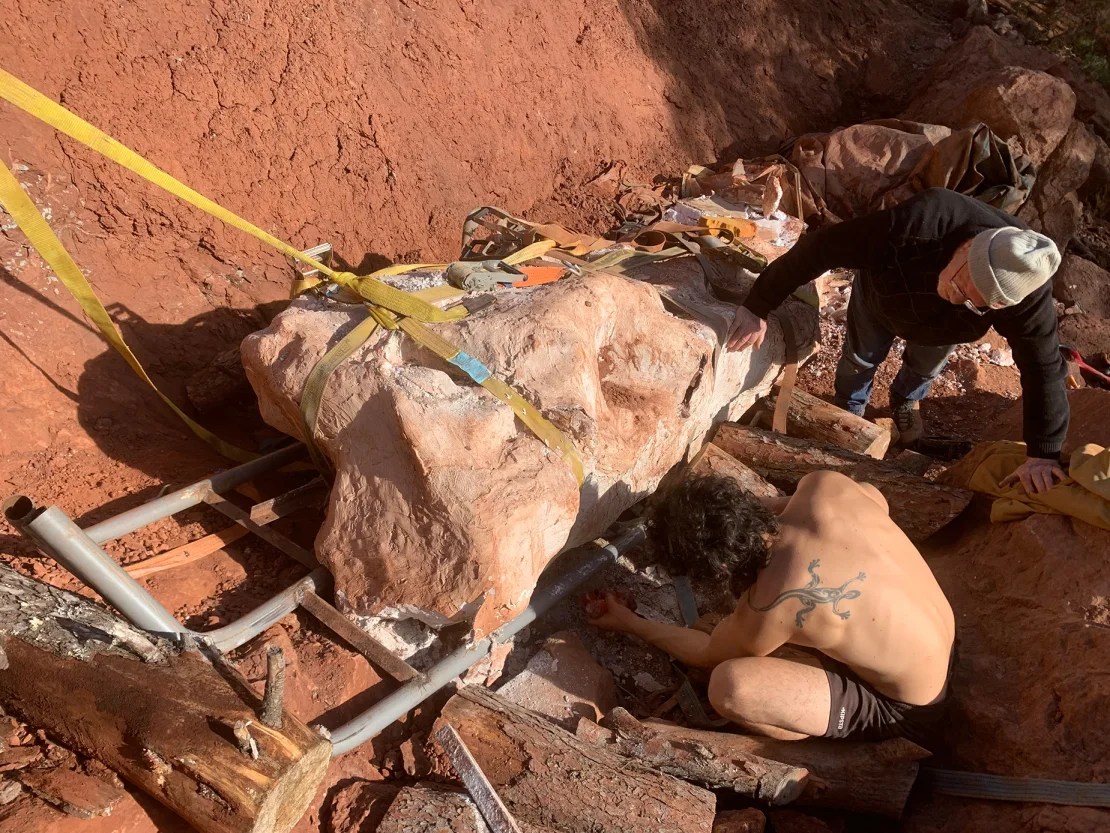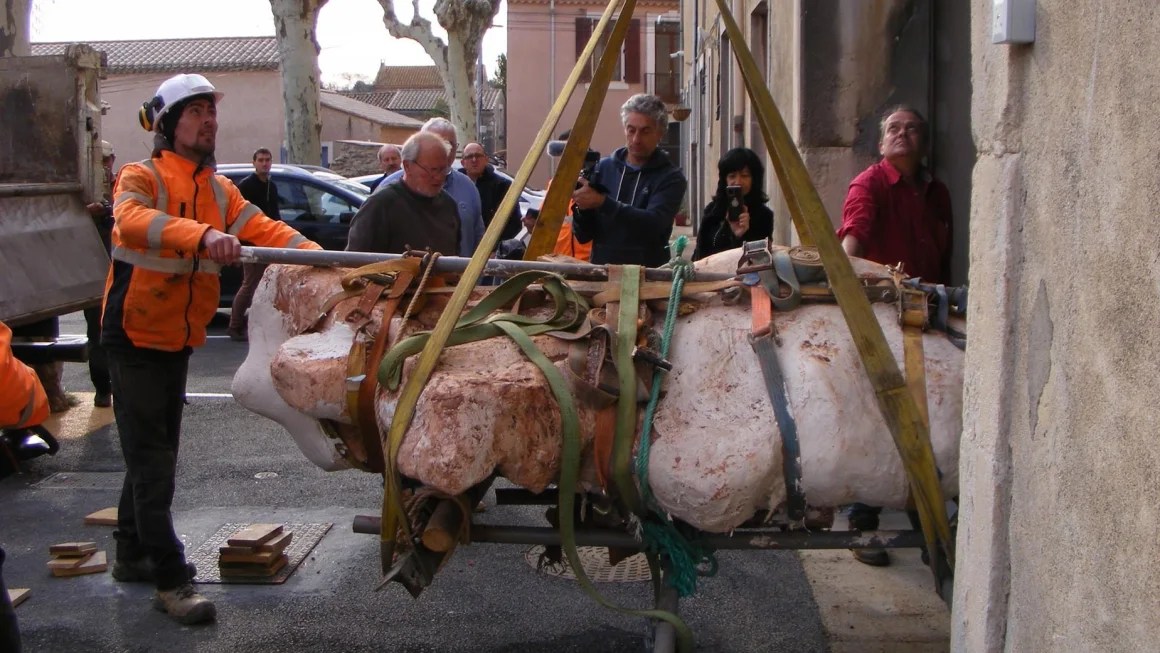(CNN) — A discovery in southern France has revealed a rare specimen: a nearly complete dinosaur skeleton fused from posterior skull to tail.
The largest fossil was discovered in May 2022 after 25-year-old amateur paleontologist Damian Bochetto spotted something unusual while walking his dog through a forest in Montuliers, France. Boschetto had noticed a cliff edge that had recently collapsed and decided to take a closer look when he saw a bone sticking out of the ground, local media France Bleu reported on February 13.
The Archeology and Paleoculture Society of the Crucy Museum, in collaboration with the French National Center for Scientific Research, identified the nearly 10-meter-long fossil as a titanosaur skeleton during the excavation. Boschetto, who has been a member of the association for eight years, told CNN that finding dinosaur remains is “always exciting and interesting for scientific research and understanding of the ecosystems of the time.” This makes for an extraordinary discovery.
“From a museum perspective, this will allow us to present almost complete animals in anatomical positions to the public, which is a great thing,” Boschetto said by email.

The largest fossil was discovered in May 2022 when a bone was uncovered on the edge of a collapsed cliff. Credit: Damian Boschetto
A group of history and archeology buffs created the Archeology and Paleoculture Society in 1975 to preserve the heritage of the town of Cruci, many of whose members have become paleontology fans thanks to the wealth of dinosaur fossils from the area, Jean Marc said. Veysiers, a member of the group and one of the fossil producers of the discovery. Today, the association is made up of residents of the area, including some scientists and students.
“The most exciting thing is realizing that we have at least one anatomically linked animal and it's a titanosaur, a long-necked dinosaur,” Veysiers said in an email. “(Boschetto) is an intelligent and enthusiastic naturalist who spends a lot of time exploring the region in search of new areas. (…) He became an expert on the fauna of the Upper Cretaceous of our region.
For the past two years the association has been excavating what Boschetto referred to as a “bed of bones,” a term used by paleontologists to describe a dense area of animal bones and other fossil remains. The newly announced discovery is not Boschetto's first.
During the excavation, 70% of the entire titanosaur skeleton was recovered, and it was recently revealed along with other fossils of various dinosaurs and vertebrates, some of which are anatomically related and nearly complete. Other remains identified include fragments of the skeletons of rhabdodon (a titanosaur-like herbivore) and carnivores such as theropods and crocodiles, according to Boschetto.
The titanosaur skeleton is currently in the Kruzy Museum's lab, where it will be further studied, Veysiers said.

Damian Bochetto (left) and Jean-Marc Vaissiers (right) are members of the Archeology and Paleocultural Society of the Crucifixion Museum, where the fossils are now housed. Credit: Damian Boschetto
Ditto Titanosaur
Researchers estimate the age of the newly discovered fossil to be 70 to 72 million years old, but titanosaurs roamed on all fours from the late Jurassic to the end of the Cretaceous period, 163.5 to 66 million years ago. Titanosaurs belong to a large group of dinosaurs called sauropods, a family of long-necked herbivores, according to Britannica.
Fossilized remains of titanosaurs are widely found in Europe, but few have been found in anatomical connection, Boschetto said. Finding a skeleton in this joined state suggests the body was buried before it completely decomposed, leaving “some tissue that connects the bones together,” said Matthew Carano, a research geologist and curator of dinosauria at the National Museum of Natural History. Smithsonian Institution.
The integrity of the specimen “will make it easier to determine whether it is a new species or a new specimen of an already known species,” Carano said in an email. “It will take time to learn all the details about this new specimen, but I believe it will provide important new information about this group of dinosaurs.”
The area where the Boschetto specimen was found is known to be rich in fossils of dinosaurs and other species that lived at the same time, and “constitutes one of the largest collections of Late Cretaceous dinosaurs in France,” he said. The association did not make the discovery public until excavations were completed to protect the archaeological site, he added.
The association plans to continue researching the fossils and further explore the area, and board members hope to secure funding “to build a large-scale museum and present these collections,” Boschetto said.





:quality(85)/cloudfront-us-east-1.images.arcpublishing.com/infobae/KTKFKR763RBZ5BDQZJ36S5QUHM.jpg)